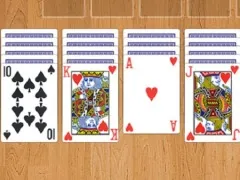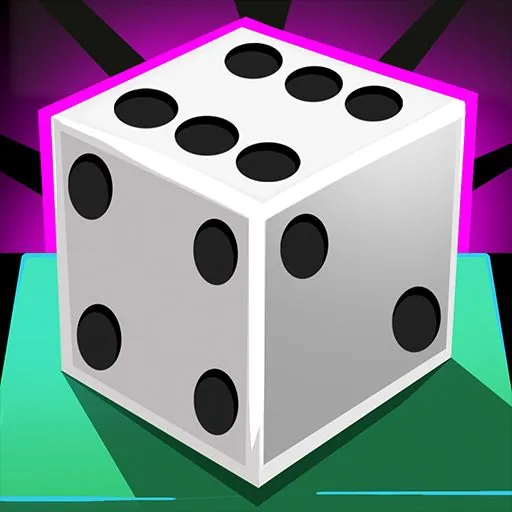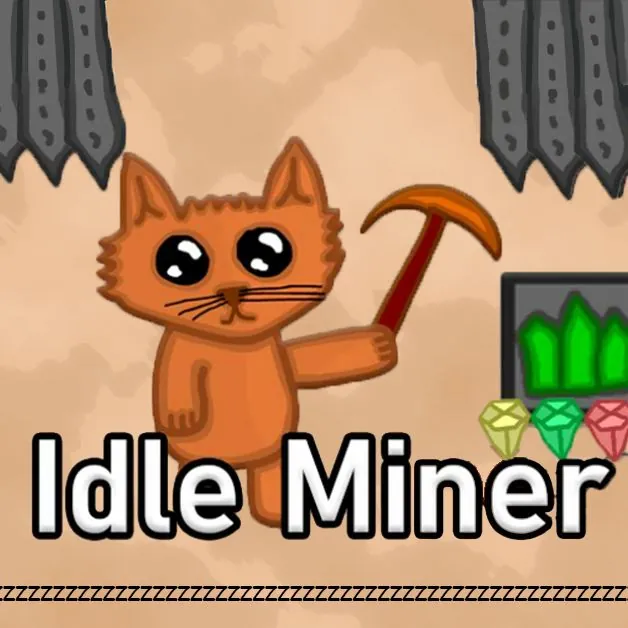2048
SIMILAR GAMES
Game Description
2048 - COOLMATHGAMES
About 2048 - COOLMATHGAMES
Welcome to the ultimate guide for mastering the deceptively simple yet profoundly strategic game of 2048. Presented here on a platform dedicated to providing accessible and engaging math games, 2048 stands out as a testament to how elegant design can foster deep, enduring gameplay. We invite players of all ages to explore the fascinating mechanics behind this tile-merging phenomenon, a game that challenges your logical thinking and spatial reasoning in equal measure. Prepare to immerse yourselves in a world where every move counts, and the pursuit of the elusive 2048 tile becomes a captivating quest.
The Genesis and Appeal of 2048
The 2048 game, first released in 2014, quickly captured the imagination of puzzle enthusiasts worldwide. Its rapid rise to popularity can be attributed to its minimalist aesthetic and the addictive nature of its core gameplay loop. Unlike many complex strategy games, 2048 is immediately approachable. The rules are easy to grasp: slide tiles on a 4x4 grid to merge tiles of the same number, with the ultimate goal of creating a tile with the value of 2048. However, beneath this veneer of simplicity lies a sophisticated puzzle that demands careful planning, foresight, and a keen understanding of probabilistic outcomes. This accessibility, coupled with its inherent depth, makes 2048 a truly universal gaming experience, perfectly suited for educational platforms that champion cognitive development through play.
Understanding the Core Mechanics: Swiping and Merging
The fundamental operation in 2048 is the swipe. Players can swipe in four directions: up, down, left, or right. When a swipe occurs, all tiles on the grid move as far as possible in that direction until they hit another tile or the edge of the grid. The magic happens when two tiles with the same numerical value collide during this movement. When this occurs, the two tiles merge into a single tile with a value that is the sum of the two original tiles. For instance, two '2' tiles merging create a '4' tile, two '4' tiles become an '8', and so on. This process of merging and doubling is the engine that drives the player towards higher scores and, ultimately, the 2048 tile.
Crucially, after each valid swipe that results in any tile movement, a new tile appears on the grid. This new tile will always be either a '2' or a '4', with the '2' appearing more frequently. The placement of this new tile is random, adding an element of unpredictability and requiring players to adapt their strategies on the fly. The grid is a finite space, and the introduction of new tiles means that the board gradually fills up. This constraint is central to the game's challenge; players must manage the available space effectively to avoid getting blocked.
The Strategic Depth: Beyond Simple Merging
While the act of merging tiles is straightforward, achieving the 2048 tile, and continuing to higher scores, requires a strategic approach. Players who merely swipe randomly will find themselves overwhelmed quickly as the board fills with low-value tiles. The key to success lies in developing a consistent strategy to manage the grid's layout and the placement of new tiles.
The Importance of a Corner Strategy
One of the most widely adopted and effective strategies is the "corner strategy." This involves choosing one corner of the 4x4 grid (e.g., the bottom-left or top-right) and attempting to keep the highest value tile permanently fixed in that corner. The idea is to direct all merges towards this corner, ensuring that your most valuable tile acts as a stable anchor for subsequent merges. To achieve this, players typically prioritize swipes that consolidate tiles towards that chosen corner, often limiting their directional choices to two or three directions to maintain the integrity of the corner.
For example, if the strategy is to keep the highest tile in the bottom-left corner, players would primarily use the 'down' and 'left' swipes. 'Right' swipes might be used strategically to consolidate tiles, but 'up' swipes are generally avoided unless absolutely necessary to prevent the grid from becoming completely filled and unwinnable. This methodical approach ensures that larger tiles are consistently moved into position to merge with existing high-value tiles, rather than being scattered randomly across the board.
Maintaining Order and Creating Chains
Beyond the corner strategy, players should focus on maintaining an organized grid. This means trying to keep tiles of similar values adjacent to each other. When tiles are grouped logically, it becomes much easier to predict potential merges and execute them efficiently. Creating "chains" of tiles, where a sequence of tiles with increasing values is aligned (e.g., 4, 8, 16, 32), allows for rapid progression as you move up the number ladder. This requires foresight to see how a merge will set up future merges.
The Role of Patience and Foresight
2048 is not a game of speed; it is a game of patience and foresight. Rushing moves can lead to mistakes that are difficult to recover from. Before each swipe, it is beneficial to pause and consider the immediate consequences: where will the tiles move? Which tiles will merge? Where might the new tile appear? By visualizing a few steps ahead, players can make more informed decisions and avoid trapping themselves. This contemplative approach is a hallmark of successful 2048 players.
Variations and Advanced Play
While the classic 4x4 grid and the goal of 2048 are the most well-known, the underlying mechanics of 2048 have inspired numerous variations. These might include larger grids (5x5, 6x6), different starting tile values, or alternative winning conditions. These variations often introduce new layers of complexity and require players to adapt their strategies accordingly. For instance, a larger grid provides more space, which can be both a blessing and a curse; it offers more room for maneuver but also makes it harder to consolidate high-value tiles.
Advanced players often experiment with algorithms and probability to optimize their moves. They understand that the random appearance of '2' or '4' tiles is a key factor and develop strategies that are robust enough to handle various random outcomes. Some even explore theoretical limits and optimal move sequences to achieve the highest possible scores, pushing the boundaries of what seems achievable within the game's constraints.
Educational Value of 2048
As a math game, 2048 offers significant educational benefits, particularly in developing critical thinking skills. The game subtly reinforces concepts of doubling, exponential growth, and numerical progression. Players are constantly engaged in problem-solving, pattern recognition, and strategic planning. The necessity of anticipating outcomes and reacting to new information sharpens their cognitive flexibility and decision-making abilities.
Furthermore, the game's intuitive interface and clear objective make it an excellent tool for introducing mathematical concepts in a fun and engaging way. Children can learn to associate numerical values with the visual representation of tiles and understand how adding like quantities leads to larger numbers. The game encourages logical deduction and spatial reasoning, skills that are transferable to various academic subjects and real-world situations. The addictive nature of the game ensures that players remain engaged for extended periods, providing ample opportunity for practice and skill development without feeling like a chore. This makes it an ideal addition to any educational game library, promoting learning through immersive and enjoyable gameplay.
Tips and Tricks for Reaching 2048 and Beyond
To truly master 2048, consider these actionable tips:
- Stick to Your Strategy: Once you adopt a strategy, like the corner method, try to adhere to it as consistently as possible. Deviating too often can lead to disarray.
- Prioritize Clears: Always look for opportunities to clear tiles, especially low-value ones, to make space for better arrangements. Don't be afraid to merge smaller tiles even if it doesn't immediately contribute to a high-value tile.
- Keep the Grid Open: The more open space you have, the more options you have. Avoid letting tiles pile up in the center of the grid, as this can restrict movement.
- Think Ahead: Before swiping, mentally map out the next two to three moves. This foresight is crucial for avoiding traps and creating advantageous situations.
- Don't Panic: When the grid starts to fill up or a difficult arrangement appears, take a deep breath. Often, a few strategic moves can still salvage the situation. Panicked swiping rarely helps.
- Practice Regularly: Like any skill, proficiency in 2048 comes with practice. The more you play, the more intuitive your decision-making will become.
The Enduring Legacy of a Simple Concept
The 2048 game has carved out a significant niche in the world of casual gaming and educational entertainment. Its success story is a powerful reminder that innovation doesn't always require complexity. A well-thought-out concept, elegant design, and engaging mechanics can lead to a game that is both universally appealing and intellectually stimulating. We are proud to offer 2048 as part of our collection of cool math games, providing a platform where players can sharpen their minds while enjoying a deeply satisfying puzzle experience. Whether you're aiming for your first 2048 tile or striving for incredibly high scores, this game offers endless challenges and rewards for dedicated players.
2048 invites players into a subtly complex puzzle where mathematics meets strategic maneuvering in a confined space. At its core, the game’s premise is seemingly straightforward: swipe to move and merge tiles of equal values, exponentially doubling them towards the target of a 2048 tile. Yet, beneath its minimalist interface lies a rigorous test of planning and foresight. Each swipe fills the 4×4 grid slightly, introducing new “2” or “4” tiles.
Strategic Harmony in Numbers
The essence of 2048’s challenge blooms in managing the numeric landscape. Players must cultivate a tactical harmony where each move is part of a broader strategy. The goal is to avoid isolating high-value tiles which could block potential merges. Advanced players often adopt a corner strategy, anchoring their highest value tile in a fixed position to build around. This methodical approach turns each session into a cerebral dance, where every slide, every merge, and every new tile plays into a grander scheme of spatial economy and numeric potential.
2048’s allure springs from its blend of simplicity and cognitive engagement. It doesn’t just challenge players to hit a numeric target but encourages the development of a nuanced strategy to navigate its tight, evolving board. Each game is a fresh mental workout, a puzzle that’s as addictive as it is rewarding, drawing players back to surpass their personal bests and redefine their strategic limits. This game transforms a simple grid and a series of numbers into an arena of infinite possibilities and mind-bending puzzles, proving that true challenge often comes in the most unassuming forms.















































